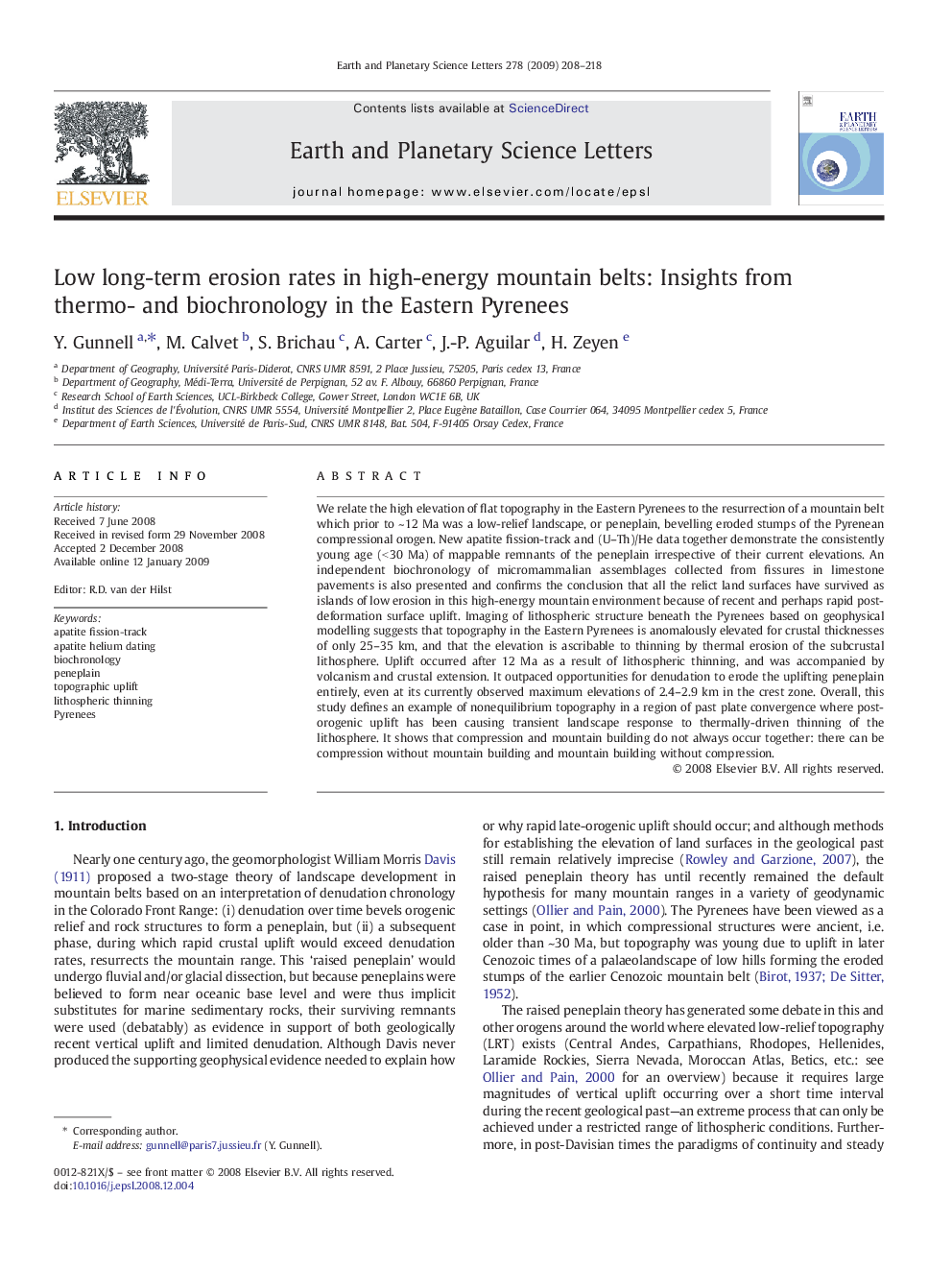| Article ID | Journal | Published Year | Pages | File Type |
|---|---|---|---|---|
| 4679321 | Earth and Planetary Science Letters | 2009 | 11 Pages |
We relate the high elevation of flat topography in the Eastern Pyrenees to the resurrection of a mountain belt which prior to ~ 12 Ma was a low-relief landscape, or peneplain, bevelling eroded stumps of the Pyrenean compressional orogen. New apatite fission-track and (U–Th)/He data together demonstrate the consistently young age (< 30 Ma) of mappable remnants of the peneplain irrespective of their current elevations. An independent biochronology of micromammalian assemblages collected from fissures in limestone pavements is also presented and confirms the conclusion that all the relict land surfaces have survived as islands of low erosion in this high-energy mountain environment because of recent and perhaps rapid post-deformation surface uplift. Imaging of lithospheric structure beneath the Pyrenees based on geophysical modelling suggests that topography in the Eastern Pyrenees is anomalously elevated for crustal thicknesses of only 25–35 km, and that the elevation is ascribable to thinning by thermal erosion of the subcrustal lithosphere. Uplift occurred after 12 Ma as a result of lithospheric thinning, and was accompanied by volcanism and crustal extension. It outpaced opportunities for denudation to erode the uplifting peneplain entirely, even at its currently observed maximum elevations of 2.4–2.9 km in the crest zone. Overall, this study defines an example of nonequilibrium topography in a region of past plate convergence where post-orogenic uplift has been causing transient landscape response to thermally-driven thinning of the lithosphere. It shows that compression and mountain building do not always occur together: there can be compression without mountain building and mountain building without compression.
